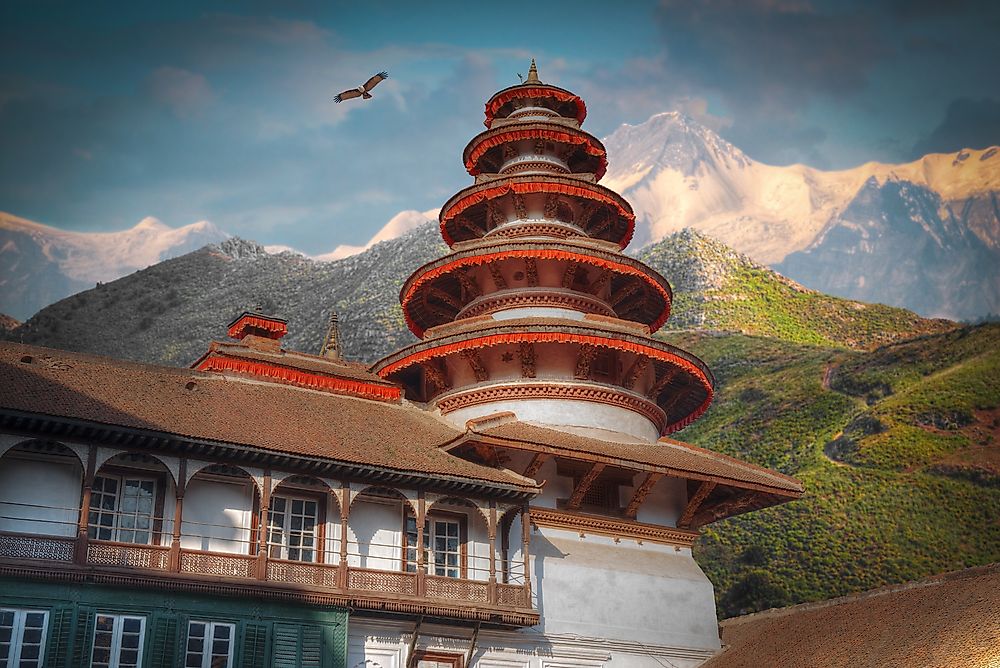What Continent Is Nepal In?

Nepal is a landlocked country in South Asia. It is one of the countries located in the Himalayan region. The Himalayan mountain range has some of the tallest mountains in the continent, as well as in Asia. Kathmandu is the capital city of Nepal. Other large cities are Pokhara, Lalitpur, and Biratnagar.
Asia is surrounded by the Indian Ocean, the Arctic Ocean, and by the Pacific Ocean. India and China, which are world’s two most populous countries, are located in Asia. These two countries were also, between 1 and 1800 BCE, the largest economies in the world. Nepal lies between these two countries, lying to the South of China, and being surrounded by India on its other sides. Asia was home to some of the earliest civilizations, especially in Mesopotamia and around the Indus Valley. The Silk Road is an important part of the history of trade.
Geography
A large part of the Himalayan mountain range is located in Nepal. Mount Everest, part of this range, and which rises to 8848 meters, is not only the highest point in Nepal, but also the highest point in the world. Nepal is a popular tourist for mountaineering because of the Himalayas. The Himalayas also inform the climatic and weather patterns in the country. Other popular activities in Nepal are hiking and bird-watching.
History
In 1769, a Gorkha king by the name Prithvi Narayan Shah conquered the Kathmandu Valley, and in so doing put together what is now present-day Nepal. During the Indian Rebellion of 1857, Nepal provided military aid to Britain which was seeking to gain control of India. As a result, the two kingdoms signed an agreement of friendship, and in so doing Nepal was spared colonialism. Nepal remained a monarchy until April 10th, 2008 when an election was held. However, the next two years was a tumultuous period with coups and counter-coups taking place because various groups wanted to take over power. However, on 20th September 2015, the country got a new constitution.
Demographics and Culture
According to a 2011 census, Nepal has a population of 26.5 million people. Because Nepal’s formation as a country involved it conquering several small kingdoms, the country is a multiethnic and multicultural one. Some of the ethnicities in Nepal include Kirants, Mongoloids, Limbu, Rai, Sherpa, and the Lame people. Most of these people migrated into Nepal from India, Tibet, North Burma, and Yunnan in China. Kathmandu, the capital, has a population of 975,453 people. Due to the multiethnicity in Nepal, there are a variety of languages spoken across the country.
Religion in Nepal consists of doctrines, complex traditions, faiths and festivals. These constituents of their religion has led to formation of Nepalese Society which is a very important society across the nation. At the same time, because in Nepalese tradition, Buddhism and Hinduism are not considered different religions, there are also a lot of Buddhists. Islam also exists, although it is practiced only by 4.2% of the population. In 2015, Nepal passed a law to protect gay people.











